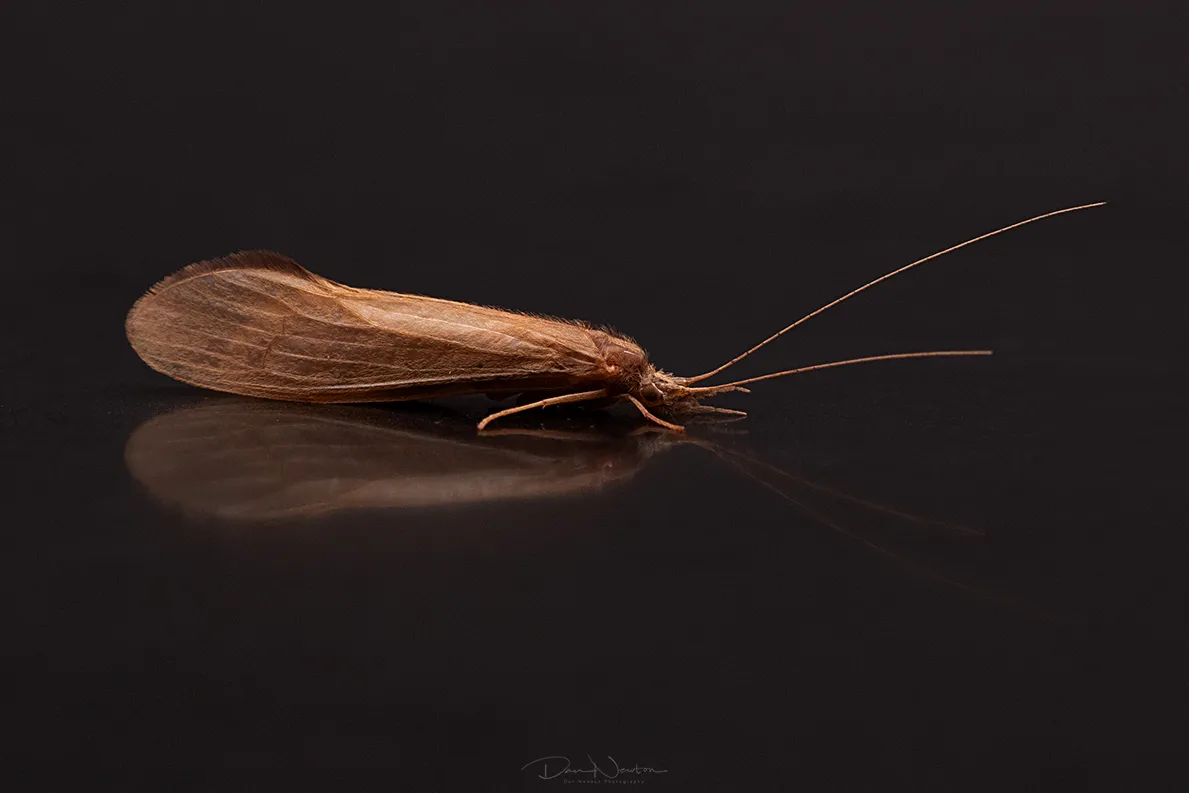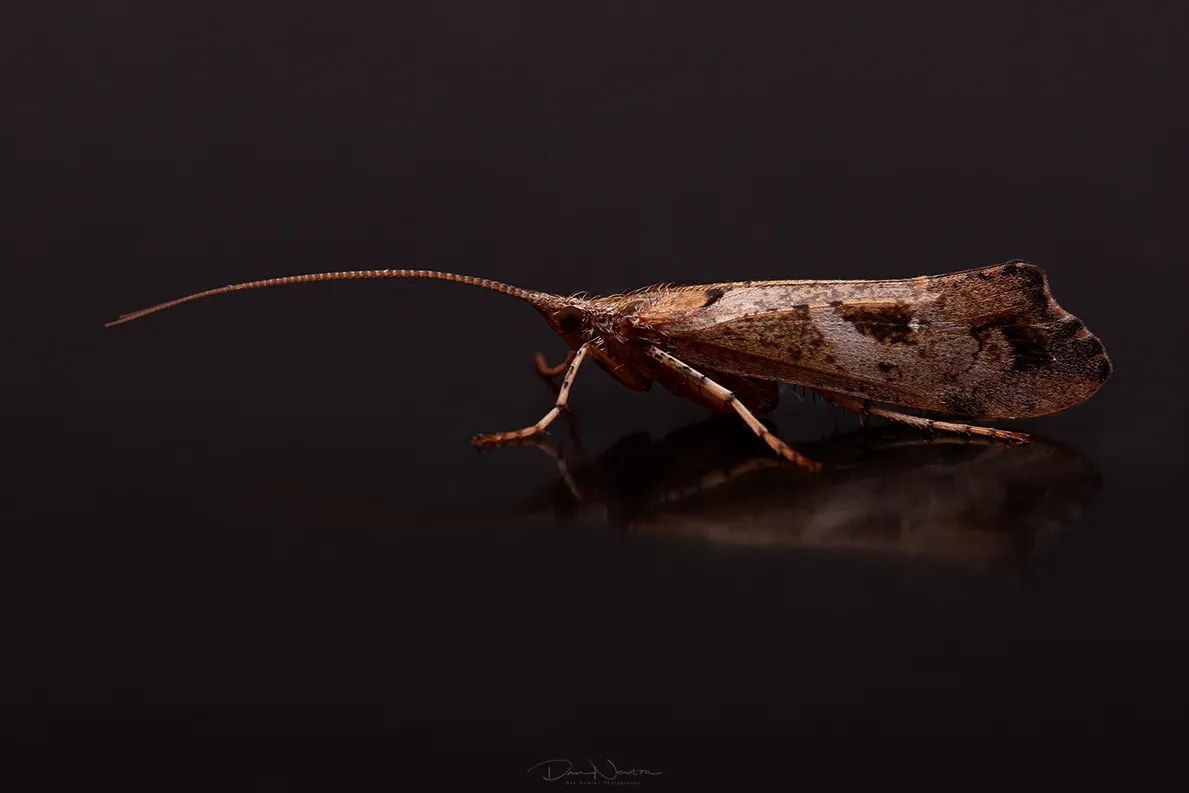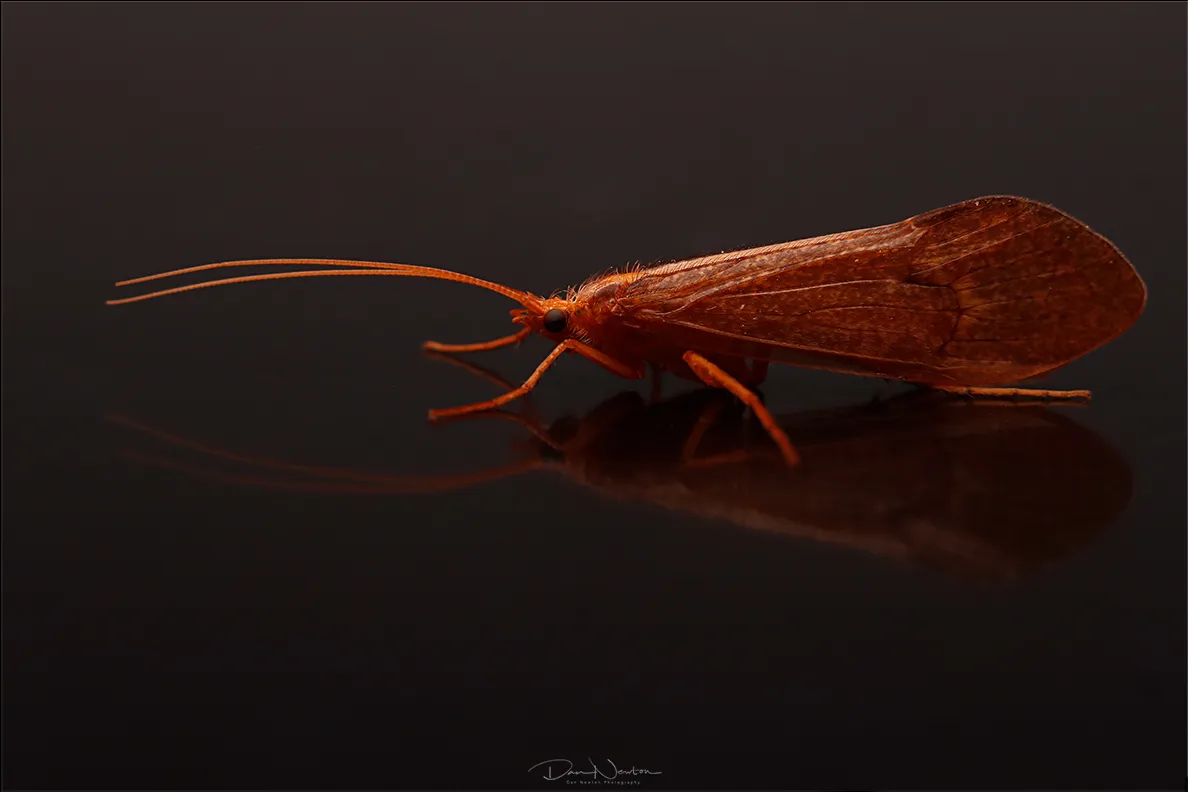Its time for another update to my Personal Photography Project.
You can check out this post for a more detailed explanation, but essentially my aim with this is to show you some pictures of invertebrates, and by using the simple black background you can appreciate how beautiful they are.
Previous Themes:
Spiders - Butterflies - 'Green' - 'Moth Trap Finds' - Higlights

Oecetis ochracea
The theme for this week is Caddisflies a group of insects from the Trichoptera order. You might initially mistake these for moths, Caddisflies are a separate group of insects. Moths are from the Lepidoptera order.
Lepidoptera means 'scale-wing' and is a reference to the millions of tiny scales on the surface of the wing which gives them the ability to create lots of different colours and markings. In contrast to that Trichoptera means 'hairy-wing' and is because the wings of Caddisflies are covered in tiny little hairs. These hairs don't seem to be in many different colours, so the Caddisfly often seems dull and brown compared to the Moths. There are still some interesting examples such as the Glyphotaelius pellucidus seen in the next image

Glyphotaelius pellucidus
As mentioned Caddisflies and Moths are closely related. They share a similar life cycle: from egg to larva (caterpillar) to pupa and then finally to adult. The striking difference is that almost all Caddisfly larvae are aquatic, that is they live underwater in ponds, streams and slow flowing rivers. They are sensitive to water quality (need unpolluted water to live and feed in while as larvae. This means they are an excellent indicator of water quality.

Phryganea bipunctata/grandis
This large caddisfly is quite distinctively marked and is one of the larger species here in the UK. From head to tail (not including the long antennae) this species is almost 2cm long. I'm not sure which Phryganea species this is... either bipunctata or grandis but I suspect it would need to be dissected to get a final identification. I released this individual shortly after the photo was taken so I'll never know which one it was.

Stenophylax sp
Another similarity with the Moth family is that Caddisflies are often attracted to Light, so I see a fair few of these in the Moth Trap. I'll finish this sequence of images with the favourite of all the Caddisflies that I have caught so far. This Stenophylax species is an attractive red colour that helps it stand out from the rest of them!
While in my care, all individuals are looked after, and after Photographs have been taken, they are all released safely outside.
I used this Wikipedia Article to check my info Caddisfies was correct as it could be.
All names confirmed and checked via Wikispieces
More of these images can be seen on my Website